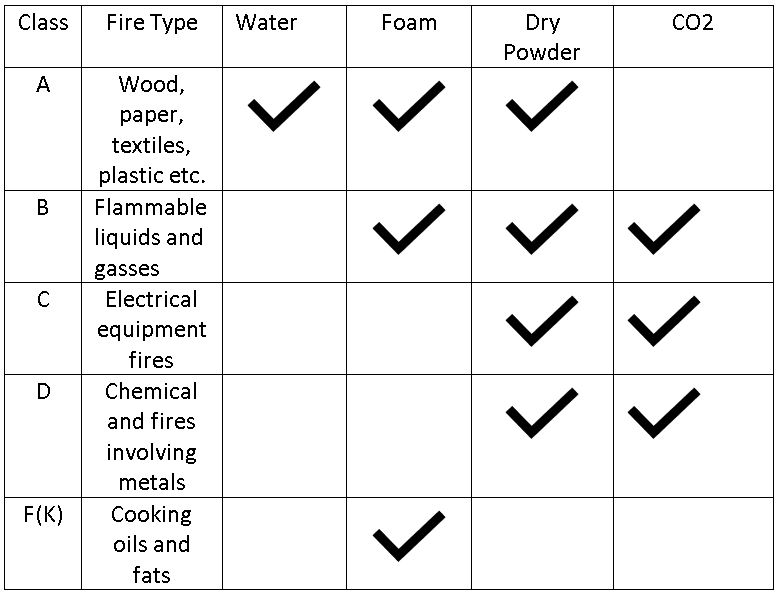 Last month we began a series of short articles on the elements of fire prevention and fire safety, beginning with fire doors. This month we are looking at an important component of fire equipment, fire extinguishers, and their suitability on different classes of fire.
Last month we began a series of short articles on the elements of fire prevention and fire safety, beginning with fire doors. This month we are looking at an important component of fire equipment, fire extinguishers, and their suitability on different classes of fire.
Classes of Fire
A fire class is a system of categorising fires depending on the type of combustible material. There is some difference between classifications in different countries, but broadly speaking there are five classes of fire:
- Class A – fires involving solid materials such as wood, paper or textiles and most plastics.
- Class B – fires involving flammable liquids such as petrol, diesel or oils, paints as well as gasses such as LPG, methane, propane.
- Class C – fires involving electrical equipment.
- Class D – fires involving chemicals and metals such as Magnesium, Lithium, Titanium and Sodium.
- Class F (sometimes classed as K) – fires involving cooking oils such as in deep-fat fryers.
Fires are classed like this to determine what type of extinguisher to use so it is important as part of your risk assessment to determine what types of fire you may be faced with.
Types of Fire Extinguisher
Different fire extinguishers contain different fire suppressing materials. There are broadly four types of extinguisher.
- Water
- Foam
- Dry Powder (DCP or dry chemical powder – very messy and difficult to clean up afterwards)
- CO2 (Cardon Dioxide)
A fifth type could be looked at as speciality extinguishers containing vaporising liquid or inert gasses. There are also other means of extinguishing fires such as fire blankets and wet sand.
What Type of Extinguisher to Use?
Using the wrong type of extinguisher in a fire situation can make matters worse. For example, using water on a combustible liquid fire such as petrol or diesel will cause the fire to spread as the fuel will float on the surface and spread out to a larger area.
The following table shows which fire extinguishers to use on which fires.
According to law, all hand-held fire extinguishers must be serviced once a year by a certified technician. The date of inspection should be recorded on a label, which is securely attached to the fire extinguisher in each case.
Inspection
Furthermore, pressure testing of extinguishers should be carried out periodically. Any extinguisher showing signs of internal corrosion or damage should be removed and replaced immediately. Any used extinguishers must be recharged by a certified company.
Are your fire extinguishers legal, safe and fit for purpose? Visit our comprehensive fire and security page or contact Firebrand today.

